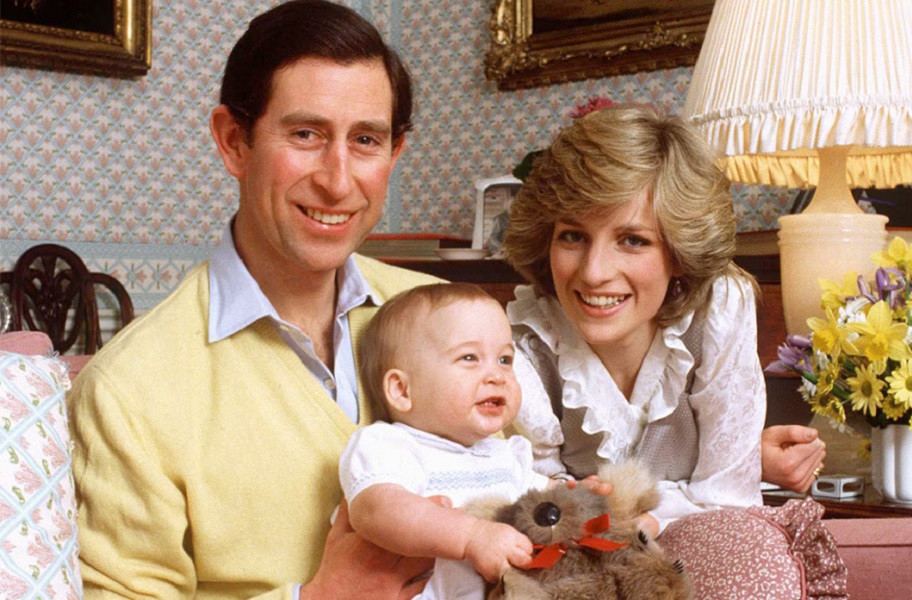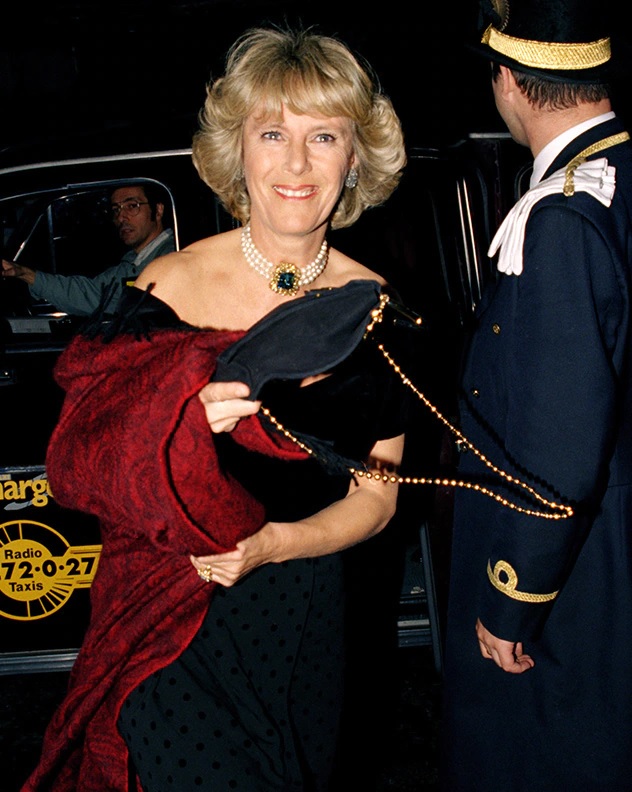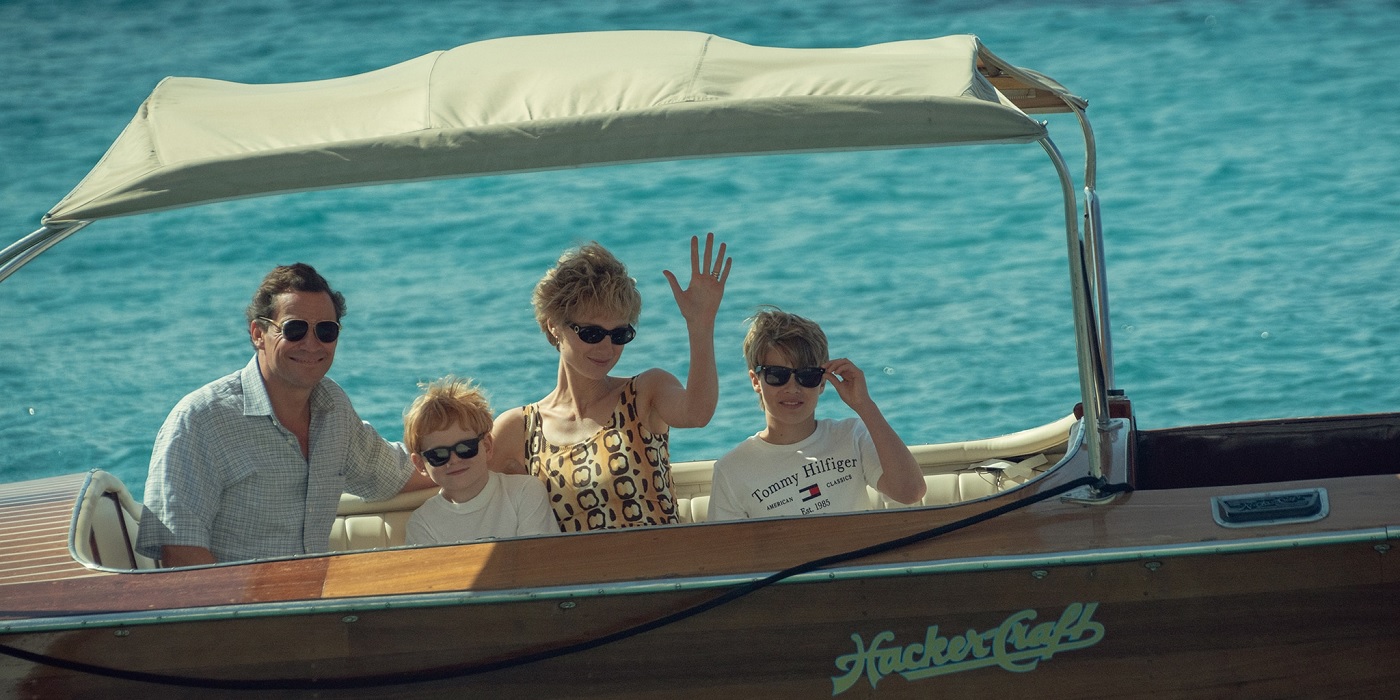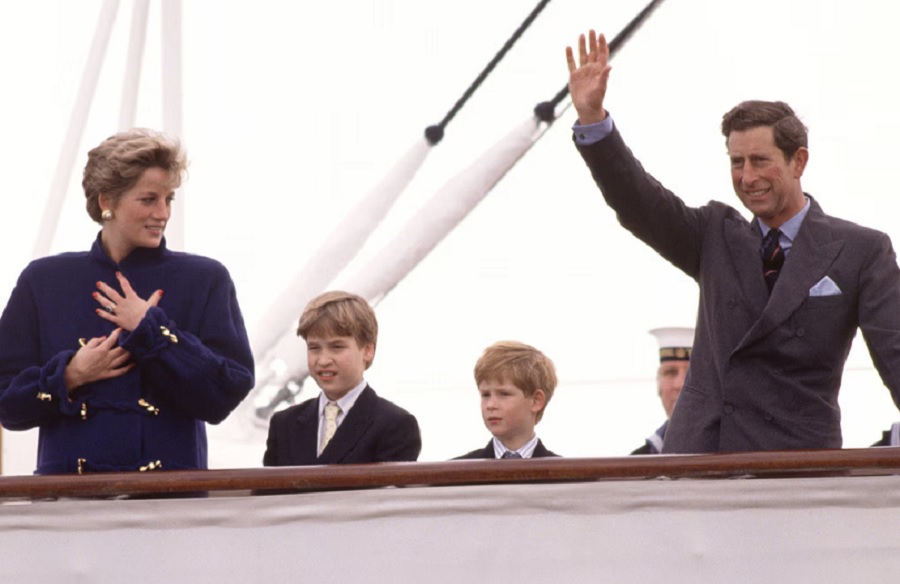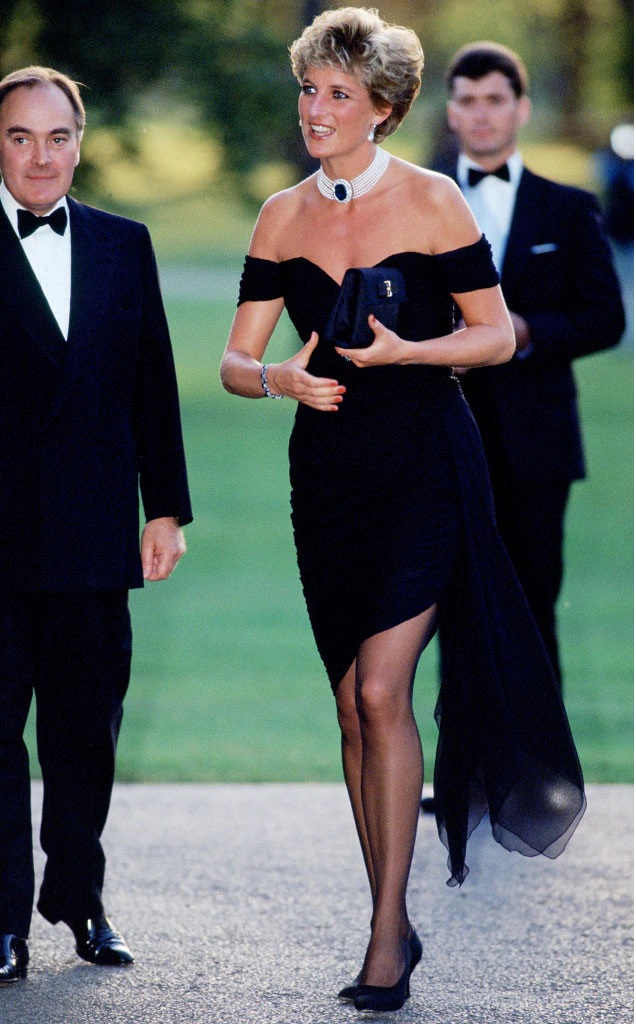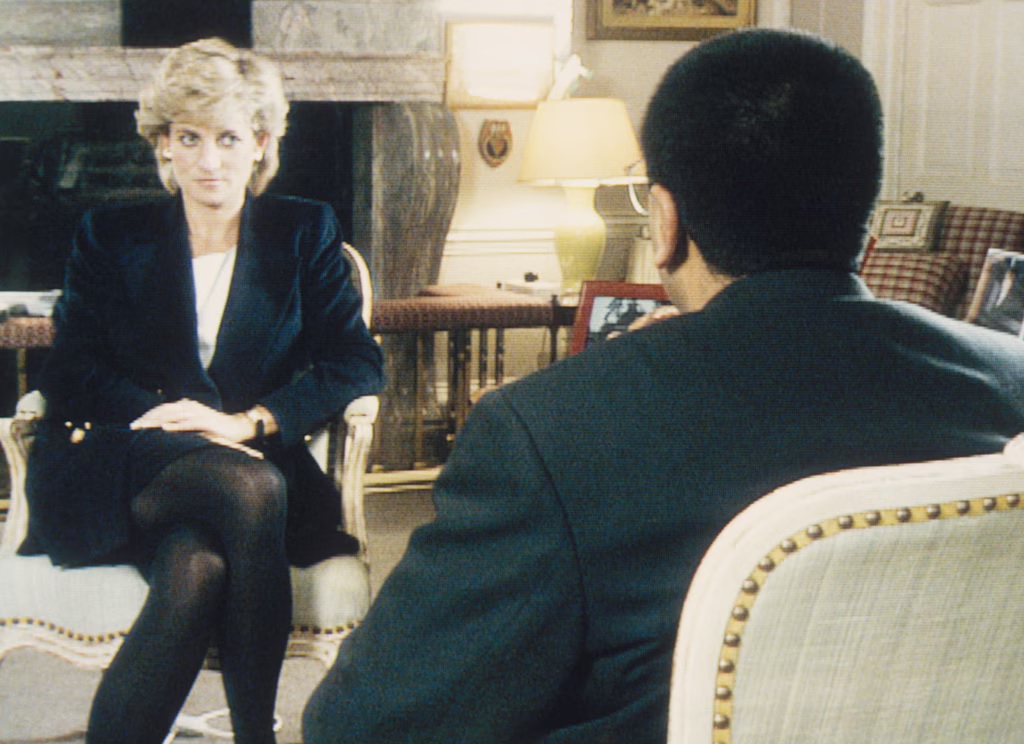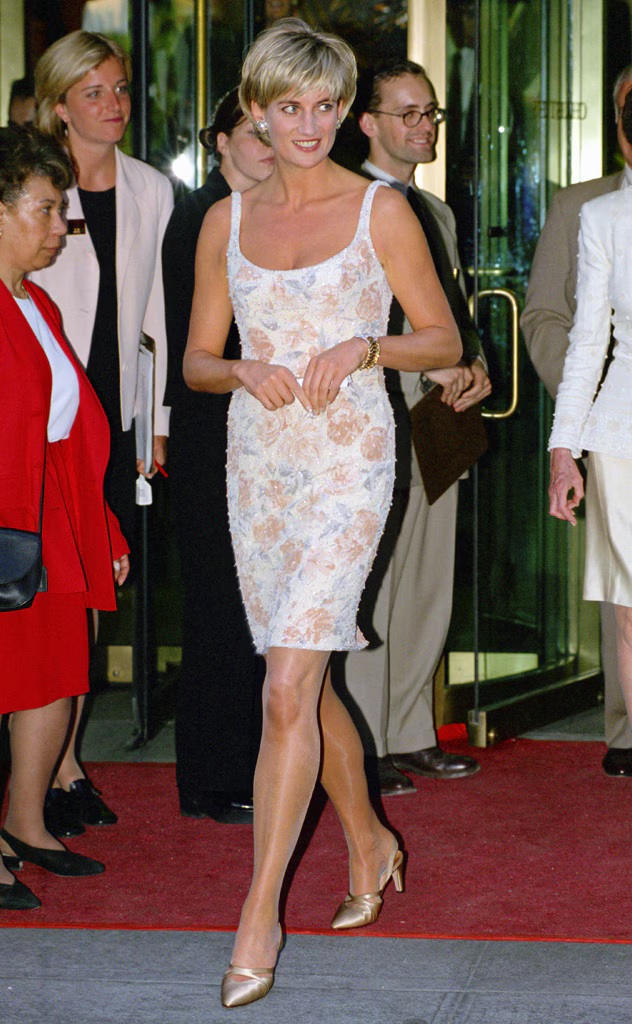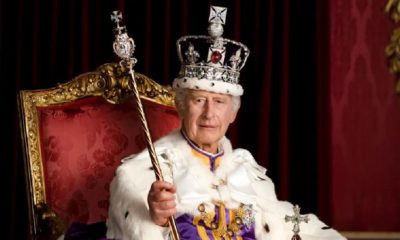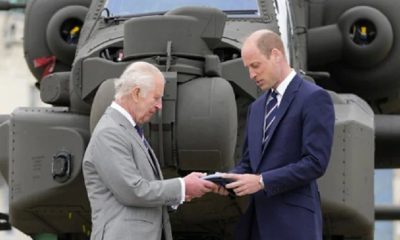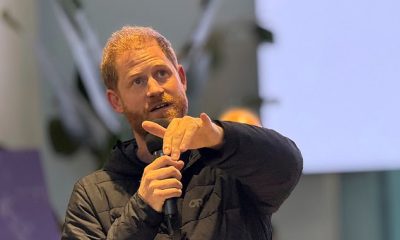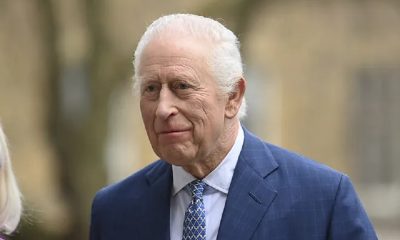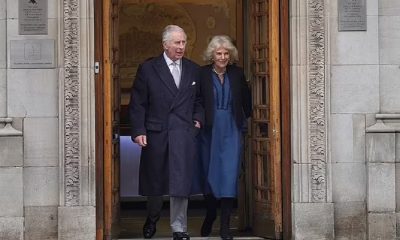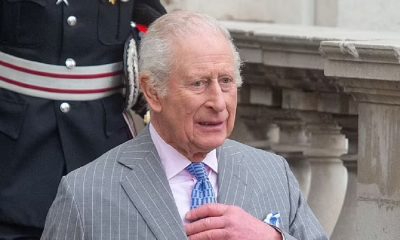ROYAL FAMILY
The Messy Truth About the End of Princess Diana and King Charles’ Marriage
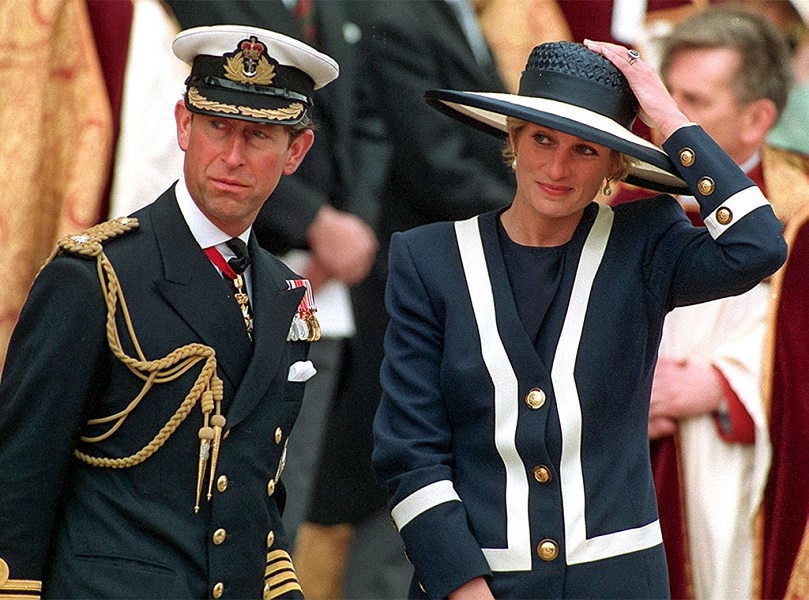
The Crown had been steadily chugging along, telling the story of Queen Elizabeth II’s highs and lows as wife, mother, daughter, sister and, above all else, monarch, most events ripped from reality and the blanks intuitively filled in by the Netflix series’ writers. But it was really all just leading up to season five, which covered the chapter of the royal family’s story where the genteel action went spectacularly off the rails.
And as fascinating as it was when Prime Minister John Major pushed back against the queen’s request for a yacht renovation on the government’s dime, of course we’re talking about the collapse of King Charles and Princess Diana’s marriage. Which, as seen on The Crown’s fourth season, was on shaky footing before they ever said I do on July 29, 1981.
Still, after tying the knot in front of 3,500 people at St. Paul’s Cathedral, plus another 750 million tuning in on TV, the couple settled in for the presumed long haul. They traveled the world, became parents to Prince William and Prince Harry, and carried out the duties expected of the Prince and Princess of Wales. “I’ve got what my mother’s got,” Diana explained in the interview tapes she made for biographer Andrew Morton in 1991. “However bloody you’re feeling you can put on the most amazing show of happiness.”
How did Princess Diana describe her marriage to Prince Charles?
Diana detailed a vicious cycle to Morton: From day one she felt unsupported by her husband in her weighty new role. She also didn’t trust him, convinced he was still romantically involved with his married ex Camilla Parker Bowles. In turn, Diana continued, Charles was dismissive of what she acknowledged were her blatant cries for help, including instances of self-harm such as throwing herself down the stairs when she was pregnant with William in 1982. Charles accused her of “crying wolf,” she said.
Even if he was at a loss as how to help his wife, Charles did arrange for Diana to see a psychiatrist in the fall of 1982. He wrote to a friend, per Jonathan Dimbleby’s 1994 biography The Prince of Wales, “The trouble is one day I think some steps are being made uphill only to find that we’ve slid back one and a half steps the following day.”
Intense love for her children aside, Diana described the two-year stretch between William being born and Harry’s birth in 1984 as “total darkness. I can’t remember much, I’ve blotted it out, it was such pain.” Yet at the same time, she was undoubtedly coming into her own as a public figure, her uncanny ability to connect with people making her far more popular than her husband.
“Because I had a smile on my face everybody thought I was having a wonderful time,” Diana reflected to Morton. “That’s what they chose to think—it made them happier thinking that.”
What was the nature of Charles and Camilla’s relationship during his marriage to Diana?
Diana was livid when she found a bracelet Charles intended to give Camilla before their wedding. He assured her it was just a token acknowledging their in-the-past history together and, yes, he’d be delivering it in person. (According to Dimbleby, when Charles brought Camilla the bracelet in July 1981, it was the first time he’d seen her since his engagement was announced in February.) “I never dealt with that side of things,” Diana recalled to Morton. “I just said to him: ‘You must always be honest with me.'”
Diana said she did confront her perceived rival, though, at a 40th birthday party for Camilla’s sister. She recalled telling Camilla, “‘I would just like you to know that I know exactly what is going on,'” and Camilla replied, “‘I don’t know what you’re talking about!'”
But by the beginning of the ’90s, Charles and Camilla were fully, if theoretically secretly, back on. And Diana was not the only one who assumed they’d been having an affair, according to The Prince of Wales. Charles’ closest friends suspected as much, as did “one or two members of his own family,” Dimbleby wrote, who warned the prince an “illicit liaison would be damaging to his own standing and to the institution of which he was so crucial a member.”
Charles told Dimblebly in a June 1994 TV interview that he wed Diana fully intending to be committed to his wife, and that he didn’t resume his romance with Camilla until their marriage was “irretrievably broken down, us both having tried.” Camilla, Charles said, “has been a friend for a very long time and will continue to be a friend for a very long time.”
Diana told her confidante (and rumored former lover) James Gilbey, per Morton’s Diana: Her True Story in Her Own Words, “If I let it get to me I will just upset myself more. So the thing to do is to involve myself in my work; get out and about. If I stop to think, I’ll go mad.”
What happened during the year leading up to Charles and Diana’s separation?
The Crown’s Golden Globe-nominated fifth season picks up in 1991, when Charles and Diana (Dominic West and Elizabeth Debicki) and their boys embarked on an idyllic-looking cruise along the Italian coast that palace staffers helped frame to the press as a “second honeymoon” for the couple.
“You’re very aware everyone has a strong opinion about what happened and whose side they’re on,” West told the New York Times of the fraught territory covered in the controversial-upon-arrival season. “It’s a bit of a minefield.”
Charles, an avid artist, had already been on a sketching trip to Tuscany earlier in the year, and the tabloids found out that Camilla spent several days in a villa that was a 30-minute drive away. When they went to Italy as a family, Diana told Morton, Charles regularly phoned Camilla from the yacht.
Diana’s collaboration with Morton was also getting underway. The princess, upon hearing that the former tabloid journalist was planning a biography of her anyway, had given the OK to her inner circle to cooperate with the project. And she shockingly agreed to participate as well, albeit entirely in secret. Her longtime friend Dr. James Colthurst brought her Morton’s questions and then delivered the tapes back to the writer. “Initially, I sat and I read out the questions, but that was too slow for Diana,” Colthurst told NBC News in 2004. “She snatched the questions away from me and then clipped the microphone on to herself and the tape recorder was on and away she went.”
Christmas with the royal family at Sandringham in 1991 wasn’t exactly the pivotal, hallucinatory couple of days the 2021 film Spencer—featuring Kristen Stewart’s Oscar-nominated portrayal of the princess—would suggest. But Diana really was trying to figure out how to be free and married to Charles at the same time. “I think I’m going to cut a very different path from everyone else,” she predicted to Morton. “I’m going to break away from this set-up and go and help the man on the street.” That sounds “so condescending,” she added, but “I’m being pushed more and more that way.”
Charles and Diana’s paths had, indeed, diverged and were at times viewed to be competing, such as when Charles sent flowers to Mother Teresa when she was convalescing at a hospital in Rome in January 1992—and Diana flew to visit her in person. The disconnect continued when the pair traveled to India together that February, site of Diana’s infamous solo photo op outside the Taj Mahal. When asked why she described the sojourn as a “healing experience,” she told the reporters gathered round that they could “work that out” for themselves.
Per Morton, Diana no longer felt comfortable around her husband’s staff, worrying they were watching and judging her every move. She started opening her own mail and sending scented candles as tokens of thanks instead of writing letters, for fear they’d be used against her. She also thought long and hard before going anywhere with anyone, especially any man, weighing whether it was worth the inevitable headlines.
How did Andrew Morton’s book affect Charles and Diana’s marriage?
“Diana driven to five suicide bids by ‘uncaring’ Charles,” read the first headline from the Sunday Times, which serialized Morton’s book starting June 7 before its publication June 16. The extent of Charles’ involvement with Camilla was also on unprecedented display. Tina Brown reported in her 2007 book The Diana Chronicles that Morton asked for proof before he took Diana’s word about an affair, so the princess brought him letters from Camilla that Charles had saved. The publishing team “was instantly persuaded that the affair was real,” Brown wrote.
The Sunday Times’ editor, Andrew Neil, also told Dimbleby that he didn’t initially believe Diana’s claims about suffering from bulimia and attempting suicide, but Morton stood by every word and produced statements from numerous people quoted in the book attesting to its accuracy.
Having purposely never met Morton, Diana maintained deniability. She insisted she wasn’t involved to the queen’s private secretary (and Diana’s brother-in-law), Robert Fellowes, who, going on her word, shut down rumors that she was—which in turn paved the way for the Press Complaints Commission’s statement slamming the “odious exhibition of journalists dabbling their fingers in the stuff of other people’s souls.”
Morton had agreed to the subterfuge and kept the princess’ confidence even as he was publicly raked over the coals, accused of everything from outright fabrication to trying to ruin the royal family. “[A] potpourri of MPs were keen to see me locked away in the Tower,” he recalled in a later edition.
The In Her Own Words part of the title was only added after Diana’s death, along with a transcript. “I felt she was very hard done by Charles and the royal family,” Morton told the Belfast Telegraph in 2017 upon the release of the 25th anniversary edition, which was three-times as long as the 150-page original. “So, I had no qualms about supporting her.”
Dimbleby wrote that, even after the Morton book came out, Charles was telling friends that he hoped his marriage would survive, at least for the sake of their children and the monarchy, even if they basically led separate lives. Opposed to a divorce but understanding that things couldn’t go on as they were, the queen and Prince Philip advised the younger couple to give themselves three months to see if they could reconcile.
What was “Squidgygate”?
The spectacle went from bad to worse in August 1992, when The Sun published a transcript of a leaked phone conversation allegedly between Diana and an unidentified admirer from Dec. 31, 1989. The man called her “darling” 53 times and “Squidgy” or “Squidge” 14 times during the course of the chat, as Diana lamented that her husband was making her life “real, real torture.”
The man on the phone was identified as Gilbey, who was subsequently trashed by the press but resolutely never commented on the scandal, even to Morton. (More from the “Squidgy” conversation was aired on Australian TV in March 1993, the day before Diana left on a trip to Nepal, her first post-split solo engagement.)
This time the queen and Philip met with Charles and Diana at Balmoral to sign off on an unofficial separation. Charles agreed to move out of Kensington Palace and the estranged pair would be free to go their separate ways, converging necessarily for the kids and events such as Trooping the Colour.
Yet the show also went on, and Charles and Diana embarked on an official trip to South Korea at the end of October, quietly promoted by Charles’ staff to several papers as the “togetherness tour.” While successful on its diplomatic face, Dimbleby wrote, “both the Prince and the Princess were aware that their lovelessness was the only story in Britain.”
While they were away, there was much ado about the paperback edition of the Morton book, containing for the first time mention of several tough-love letters Philip wrote to Diana. She later publicly defended her in-laws, saying in a statement, “The suggestion that they have been anything other than sympathetic and supportive is untrue and particularly hurtful. She and Charles flew to Hong Kong, but she didn’t stay, instead traveling on to London. On his flight back to the U.K. on Nov. 8, 1992, Charles wrote to a friend, “I don’t know what will happen from now on but I dread it.”
When did Princess Diana and Prince Charles formally separate?
Diana ultimately agreed to a legal separation on Nov. 25, the day after the queen gave her historic “annus horribilis” speech. During the ensuing week, Diana visited William and Harry at Ludgrove School in Berkshire so she could tell them in person before it became international news.
John Major—who had advised the queen on the split’s constitutional implications (there were none)—announced the breakup of the Prince and Princess of Wales’ marriage to the House of Commons on Dec. 9, 1992. “This decision has been reached amicably,” the prime minister said, “and they will both continue to participate fully in the upbringing of their children.”
The queen and Philip, “though saddened, understand and sympathize with the difficulties that have led to this decision,” the PM continued. “Her Majesty and His Royal Highness particularly hope that the intrusions into the privacy of the Prince and Princess may now cease.”
Major raised some eyebrows, however, when he noted that the line of succession remained intact and “there is no reason why the Princess of Wales should not be crowned Queen in due course.” Talking to the Mail on Sunday in October, Major encouraged a boycott of season five of The Crown, singling out the episode in which Charles ponders the meaning of a poll that seemingly showed people were in favor of the queen abdicating as particularly offensive. Major called any suggestion that Charles tried to mess with his mother’s reign a “barrel load of malicious nonsense.” (Jonny Lee Miller portrays the queen’s ninth PM.)
What was “Tampongate,” exactly?
Charles and Diana’s marriage may have been over for all intents and purposes, but the intrusions didn’t cease. In January 1993, making for the family’s second “gate” in six months, multiple tabloids published the transcript from a surreptitiously recorded Dec. 17, 1989, phone call between Charles and Camilla in which he mused about how nice it would be to “live inside” her trousers. But, he cracked, with his luck he’d probably be reincarnated as her tampon.
The future king and queen consort were mocked far and wide—Dana Carvey played Charles dressed as a tampon on Saturday Night Live—and even the prince’s fitness to rule one day was called into question. A Gallup poll put his approval rating at 4 percent in the wake of the humiliation. (Pre-engagement to Diana in 1980, 70 percent of poll respondents picked Charles as their favorite royal.)
Charles lamented to Camilla during the same conversation that loving him had meant that she suffered “all these indignities and tortures and calumnies.” To which she replied, “I’d suffer anything for you. That’s love. It’s the strength of love.”
What did Diana’s life look like after the separation?
Diana tried to be away from London as much as possible in 1993, going to Nepal in March and Zimbabwe in July on official tours, then vacationed in Bali and took William and Harry to the United States, where their itinerary included a visit to Disney World. At a charity luncheon in December 1993, Diana announced her intent to withdraw from public life, at least temporarily, explaining that she needed “time and space” to process everything that had happened.
She emerged a few months later at the chic Serpentine Gallery—located on the grounds of Hyde Park’s Kensington Gardens, so the most convenient destination possible for the Kensington Palace resident—for a reception where, according to Morton, Oscar winner Jeremy Irons told Diana he took a year off from acting and she replied, “So have I.”
Why was Diana’s memorable LBD called her “revenge dress”?
In 1994, Dimbleby interviewed the Prince of Wales for the documentary Charles: The Private Man, the Public Role to commemorate the 25th anniversary of his investiture.
On the night the special aired, June 29, 1994, Diana—tipped off beforehand that Charles had admitted to his affair with Camilla on camera—showed up at the Serpentine Gallery for a Vanity Fair party in a short, black, off-the-shoulder Christina Stambolian number with a plunging (for a royal) sweetheart neckline. According to Princess Diana’s Dresses: The Auction, Stambolian said Diana had the dress hanging in her closet for three years but worried it was too racy to actually wear.
“Revenge is chic,” heralded The Sun. “Di last night showed Charles what he’s missing.”
Did Princess Diana’s explosive 1995 BBC interview really lead to her divorce?
Diana’s hour-long interview with Martin Bashir on the BBC’s Panorama—during which she flooded the room with tea, let alone spilled it—was widely viewed as the last straw for the royal family when it came to her and Charles’ still-technically-married status.
Diana covered much of the same territory from the Morton book—her bulimia, depression, Charles’ future as king, Camilla—but also shockingly acknowledged her own extramarital affair with her (and her sons’) former riding instructor, James Hewitt.
Four weeks after Diana told the world “there were three of us in this marriage,” the queen wrote to both her son and daughter-in-law to tell them it was time to divorce, signing the letter to Diana, “with love from Mama.” The next day, Dec. 19, Charles wrote to Diana, per Sally Bedell Smith’s 2017 biography Prince Charles, asking her to join him in putting an end to their “sad and complicated situation.” Even after the separation in 1992, Diana had still spent every Christmas at Sandringham to make the holidays normal for William and Harry, but she chose not to join the royals in 1995.
How complicated was Charles and Diana’s divorce?
On Feb. 28, 1996—the “saddest day of my life,” Diana called it—the princess’ office announced that she had “agreed to Prince Charles’s request for a divorce.” The release also divulged she would be retaining her Princess of Wales title, as well as her home at Kensington Palace and office at St. James’s Palace.
Notably similar to Buckingham Palace’s “these are complicated issues that will take time to work through” response to Harry and Meghan Markle’s 2020 announcement that they were stepping back from royal duties, the palace didn’t immediately confirm the particulars of Diana’s statement, instead noting, “This will take time.”
Already peeved that Diana had jumped the gun, Bedell Smith reported, the queen had her press secretary pointedly deny reports that she and Philip pressured Diana to drop the honorific Her Royal Highness, saying the “decision to drop the title is the Princess’s and the Princess’s alone.”
And hammering out the terms did take time. The next update came July 13, 1996: Diana would retain her home and office, share custody of her sons with her ex-husband and receive the reported sum of at least $22 million, plus yearly office expenses of $600,000. And yes, Diana was still Princess of Wales—but she would no longer go by HRH.
Per Bedell Smith, Diana planned on fighting for the HRH, but dropped it when then-14-year-old William assured her it didn’t matter to him. She would still be “regarded as a member of the royal family,” the palace stated. Charles and Diana’s marriage officially ended Aug. 28. Tensions eased once the negotiations were behind them, and they reunited without incident for the Christmas service at Eton and William’s confirmation in the spring of 1997. But old grudges lingered.
On June 23, 1997, two months before she died, Diana attended a cocktail party at Christie’s in New York to celebrate the upcoming charity auction of a number of her dresses. When fellow guests commented on the Verdura bracelet she was wearing, gold with a diamond clasp of interlocking C’s, she quipped, “That is for Charles, and that is for Camilla.”

